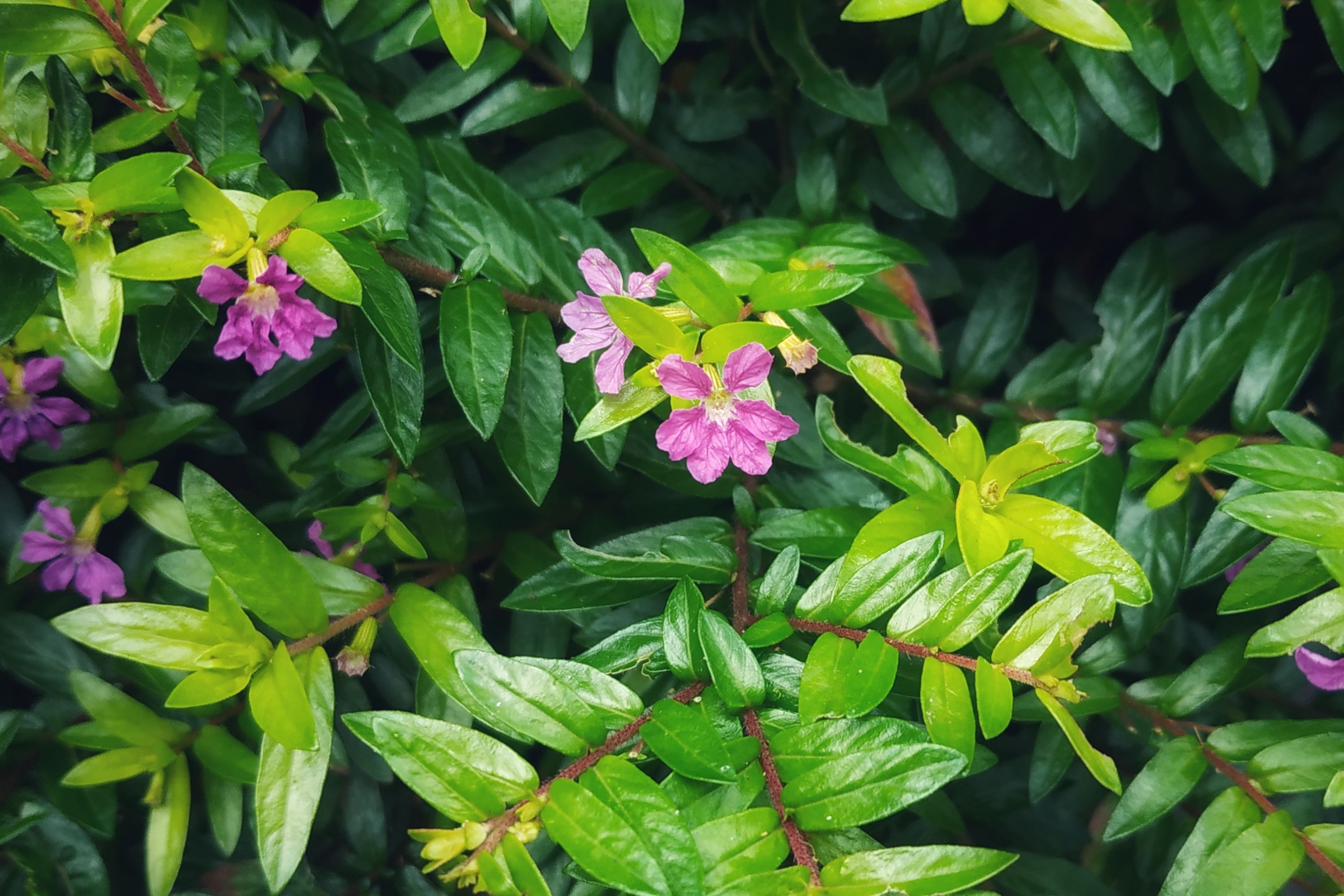False heather
(Cuphea hyssopifolia)

Description
Cuphea hyssopifolia, commonly known as Mexican heather or false heather, is a small shrub that belongs to the Lythraceae family. This evergreen perennial plant is native to Mexico, Central America, and the Caribbean. It is a popular ornamental plant in gardens and landscapes, especially in warm regions with mild winters. In this article, we will explore the various aspects of Cuphea hyssopifolia, including its taxonomy, morphology, habitat, cultivation, and uses. Taxonomy The genus Cuphea comprises about 260 species of flowering plants that are mainly found in tropical and subtropical regions of the Americas. The name Cuphea is derived from the Greek words "kyphos" (hump) and "eu" (well), referring to the shape of the flower. The species name hyssopifolia means "hyssop-leaved," which describes the plant's narrow, lance-shaped leaves that resemble those of hyssop. Morphology Cuphea hyssopifolia is a compact, bushy plant that typically grows up to 1 to 3 feet tall and wide. It has numerous slender, woody stems that are densely covered with small, dark green leaves that measure about 0.5 to 1 inch long and 0.1 to 0.2 inches wide. The leaves are arranged oppositely along the stem and have a smooth texture and a slightly glossy surface. The plant produces an abundance of tubular flowers that are about 0.5 to 1 inch long and have six lobes. The flowers are usually purple, pink, lavender, or white and bloom from spring to fall. The petals are fused to form a tube that opens up into a broad, flared mouth. The flower's stamens and style protrude from the tube and are usually tipped with yellow or red. Habitat Cuphea hyssopifolia is native to Mexico, Central America, and the Caribbean, where it grows in a variety of habitats, including forests, woodlands, and rocky hillsides. It prefers well-drained soils that are rich in organic matter and can tolerate moderate drought and heat. In its native range, the plant serves as a nectar source for a variety of pollinators, including bees, butterflies, and hummingbirds. Cultivation Cuphea hyssopifolia is a relatively low-maintenance plant that is easy to grow in warm regions with mild winters. It prefers full sun to partial shade and well-drained soils that are kept evenly moist. The plant is hardy in USDA zones 9 to 11, where it can be grown as a perennial. In colder regions, it can be grown as an annual or a container plant. Propagation Cuphea hyssopifolia can be propagated by seeds, stem cuttings, or division. Seeds can be sown in early spring or fall and should be lightly covered with soil. Stem cuttings should be taken from the plant's new growth and placed in a well-draining potting mix. Division can be done in early spring or fall by separating the plant's roots and replanting them in new soil. Pests and Diseases Cuphea hyssopifolia is generally resistant to pests and diseases. However, it can occasionally be affected by spider mites, aphids, or whiteflies, which can be controlled with insecticidal soap or neem oil. The plant can also be susceptible to root rot if the soil is kept too wet or poorly drained. Uses Cuphea hyssopifolia is a popular ornamental plant that is grown for its attractive flowers and foliage. It is often used as a border plant.
Taxonomic tree:







